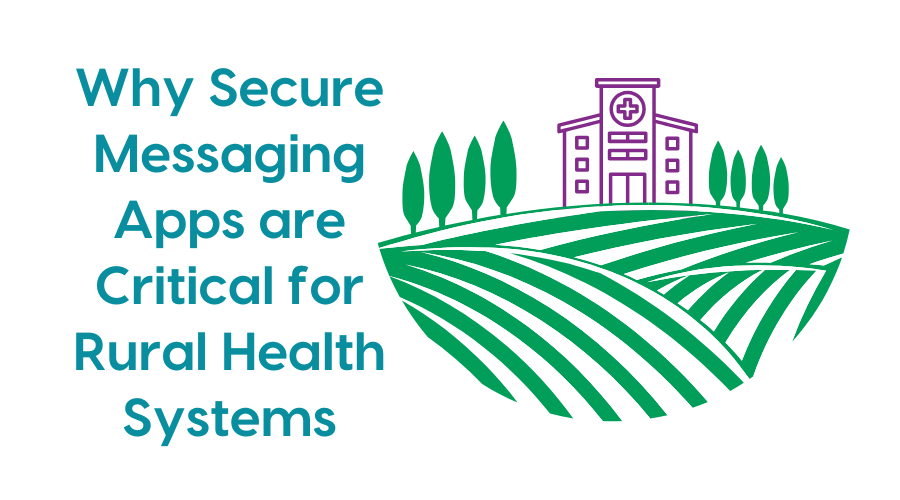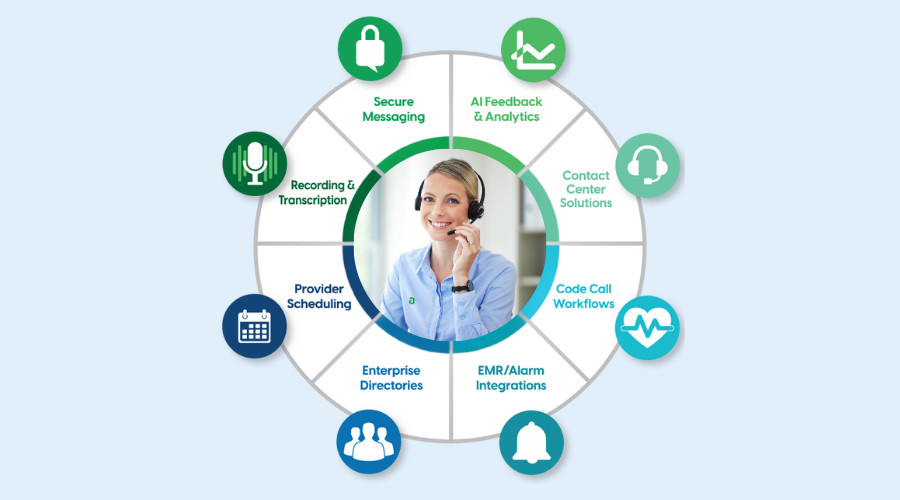Patient satisfaction is different from patient experience. While research from the NRC Health’s 2019 Healthcare Consumer Trends Report indicates that 85% of patients in the United States are satisfied with their care team, the data also indicates that patients encounter points of friction along their care journey that may result in them choosing a different healthcare provider in the future.
In today’s world, patients are also consumers. Healthcare contributes more than $1.2 trillion to the Gross Domestic Product (GDP) and is the fifth biggest industry in the United States. Healthcare systems strive to provide a frictionless patient experience to not only provide better care but to also earn their patient’s loyalty for future healthcare needs.
A recent Kaufman Hall survey of 200 hospitals and healthcare executives found that 90% of respondents said improving patient experience is a high priority.
Start at the Beginning
Before a patient can appreciate all of the innovative technologies and exceptional care their clinicians provide to them, they have to navigate the early phases of a care encounter which can be confusing and overwhelming. Their beginning journey often starts with calling their provider or contacting them via web chat, to get answers to their questions.
These communications are often routed to an organization’s contact center and are the first basic steps of a patient’s journey. The interactions are important because they start to form a patient’s impression of the entire experience and of an institution. Medical contact centers serve as a virtual lobby and communication hub of an organization and effectively become an extension of a hospital or clinic’s operations. It’s imperative that operators begin a patient’s journey with a frictionless experience and are consistently delivering that high level of patient-first service.
The NRC Health’s data supports this reasoning. In the database of patient comments, the routine parts of a patient’s experience, such as appointment-setting, wait times, and registration staff courtesy, dominated patient concerns. An astounding 60% of patient comments were related to these everyday experiences when obtaining healthcare access.
Contact Center Scripting for Seamless Interactions
Healthcare contact centers are tasked with being the front door of an organization. Every phone call or web chat interaction is an opportunity for the agent to uphold an organization’s patient-first values and provide a frictionless experience. Scripting tools and protocols can help operators provide a unified experience across all care settings for patients, their home caregivers, and their professional care staff.
Scripting helps operators seamlessly guide patients through interactions by using programmed scripts that prompt agents to ask the right questions, provide the right answers, and direct the patient to the right person or department.
Call flow scripting can automatically detect call flow and determine scripting options for operators based on an organization’s protocols. Scripts for appointments, physician referrals, prescription renewal, scheduling, research, crises and emergencies, facility directions, and much more, help to personalize each patient communication while aligning with an organization’s messaging goals.
Supporting Frictionless Patient Experiences With Technology
Healthcare organizations want to provide a frictionless patient experience while advancing the physical, mental, social, and even economic health of their communities. Some of them will have to overcome additional barriers like care deserts and poor care access. To ensure that every pathway is clear for a patient to connect with an organization, they must have the appropriate foundational technology to create and provide a consistent, seamless, frictionless patient experience.
As technology grows, so does the “consumerization” of healthcare. Consumers now expect speed and convenience in healthcare. Digital devices have normalized videoconferencing, wearable health tech, telehealth, online access to lab results, and more.
Contact Center Software for a Frictionless Environment
A hospital’s contact center software can help with an organization’s innovation strategy to improve efficiency, patient experience, and help provide a frictionless environment.
Hospital Stay
After a patient has been admitted for a hospital stay, they may be moved from one room to another for tests, procedures, and during recovery. Call center software can assign a fixed phone number to each patient that will follow them for the duration of their stay. Associating each patient with one phone number helps to streamline care communications and ease the stress of the patient’s family and friends who are trying to find their loved one after they are transferred to a different room.
Secure Messaging
Healthcare organizations can seamlessly integrate secure messaging apps with their call center software and different communication systems (nurse call, alarms, security, building maintenance, lab results, housekeeping, and more) to receive notifications faster.
Remote Patient Monitoring
Contact center software can help manage and respond to data collected via remote patient monitoring (RPM). For example, if a high-risk patient experiences an adverse change in vital signs, their wearable health monitor can send an alert to the healthcare’s contact center, triggering the software to connect to a member of the patient’s care team or dispatch paramedics to the patient’s location.
Smart Paging
Smart paging can be used by care staff to instantly locate another member of their team using the hospital call center’s directory to send them a message using that individual’s preferred contact method.
Workflows
The same communications integration engine software that incorporates personnel directories and on-call schedules used by a hospital call center, can also integrate with nurse call solutions, third-party devices (such as IP phones and mobile devices), and other applications to automate the handling and dispatching of messages and alerts to enhance workflows.
The Importance of Empathy in a Frictionless Environment
While technology is crucial, the most important ingredient in the secret sauce that results in high-quality interactions and a frictionless environment is empathy. If an organization has understanding as one of its core principles, it can discover deeper truths about the experiences of their patients.
Cultivating a patient-first culture based on empathy takes time. It has to be built, retained, and continuously improved upon. It should be foremost at all levels of an organization, and ideally, begin at the hiring process. A frictionless environment is the natural result of this kind of foundational approach to improving the patient experience through empathy. This environment draws patients in, earns their trust, and keeps them coming back for future care.
Empathy in the Call Center
It is important that agents who work in a hospital call center understand the value their organization places on empathy, and how they play a major role in conveying that care to callers. Leadership can help build empathy in their contact centers by:
- Including empathetic statements in scripting protocols.
- Reviewing speech analytic reports to identify words and phrases that indicate an operator should use empathetic language or to trigger empathy statements in the script.
- Training agents to carefully listen to callers and to not be afraid to ask callers to clarify any questions or requests they have.
- Including empathetic role-playing when training a new operator.
- Using visual cues to remind agents that they are speaking to real people. A quote or image that is displayed on the screen or in the agent’s work area helps to humanize the caller.
Patient experience leadership should involve their contact centers when planning frictionless patient experience goals. The technology already being used in their call centers, along with well-trained, informed agents, can be leveraged to help the entire enterprise achieve its patient-first goals.





